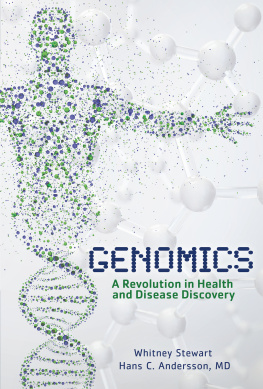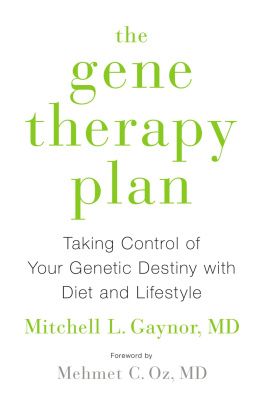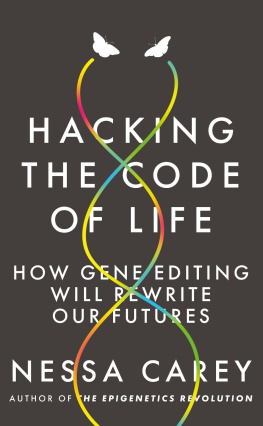

Please visit our website, www.garethstevens.com.
For a free color catalog of all our high-quality books, call toll free 1-800-542-2595 or fax 1-877-542-2596.
Cataloging-in-Publication Data
Names: Kovacs, Vic.
Title: Gene therapy / Vic Kovacs.
Description: New York : Gareth Stevens Publishing, 2017. | Series: Miracles of medicine | Includes index.
Identifiers: ISBN 9781482460995 (pbk.) | ISBN 9781482461688 (library bound) | ISBN 9781482460988 (6 pack)
Subjects: LCSH: Gene therapy--Juvenile literature.
Classification: LCC RB155.8 K68 2017 | DDC 615.895--dc23
Published in 2017 by
Gareth Stevens Publishing
111 East 14th Street, Suite 349
New York, NY 10003
Copyright 2017 Gareth Stevens Publishing
Developed and produced for Rosen by BlueApple Works Inc.
Managing Editor for BlueAppleWorks: Melissa McClellan
Designer: Joshua Avramson
Photo Research: Jane Reid
Editor: Marcia Abramson
Photo Credits: Cover Andrew Brookes/Getty Images; Title page Monika Wisniewska/Shutterstock; p. National Institutes of Health/Creative Commons
All rights reserved. No part of this book may be reproduced in any form without permission from the publisher, except by a reviewer.
Printed in the United States of America
CPSIA compliance information: Batch CW17GS: For further information contact Gareth Stevens, New York, New York at 1-800-542-2595.
CONTENTS
Chapter 1
The History of Gene Therapy
Chapter 2
The Mighty DNA
Chapter 3
Gene Therapy
Chapter 4
Gene Therapy Techniques
Chapter 5
Challenges with Gene Therapy
Chapter 6
Gene Therapy of the Future
CHAPTER 1
THE HISTORY OF GENE THERAPY
There are many different kinds of . These can often be treated or prevented. Antibiotics have proven effective against bacteria, and vaccines are useful in stopping infection from many viruses and bacteria from occurring in the first place. Some diseases arent caused by outside factors, though. Some diseases are caused by faulty genes that already exist in a persons body.
Genes are specific strands of DNA that act as instructions for your body. The whole DNA is called a chromosome, and humans have 23 pairs of these chromosomes. Taken together, these chromosomes are what make you the unique person you are.
DNA PACKAGE
IN ORDER TO FIT INSIDE A CELL, DNA WINDS TIGHTLY INTO STRUCTURES CALLED CHROMOSOMES. IF DNA FROM A SINGLE HUMAN CELL WAS UNRAVELED, IT WOULD BE SIX FEET LONG!
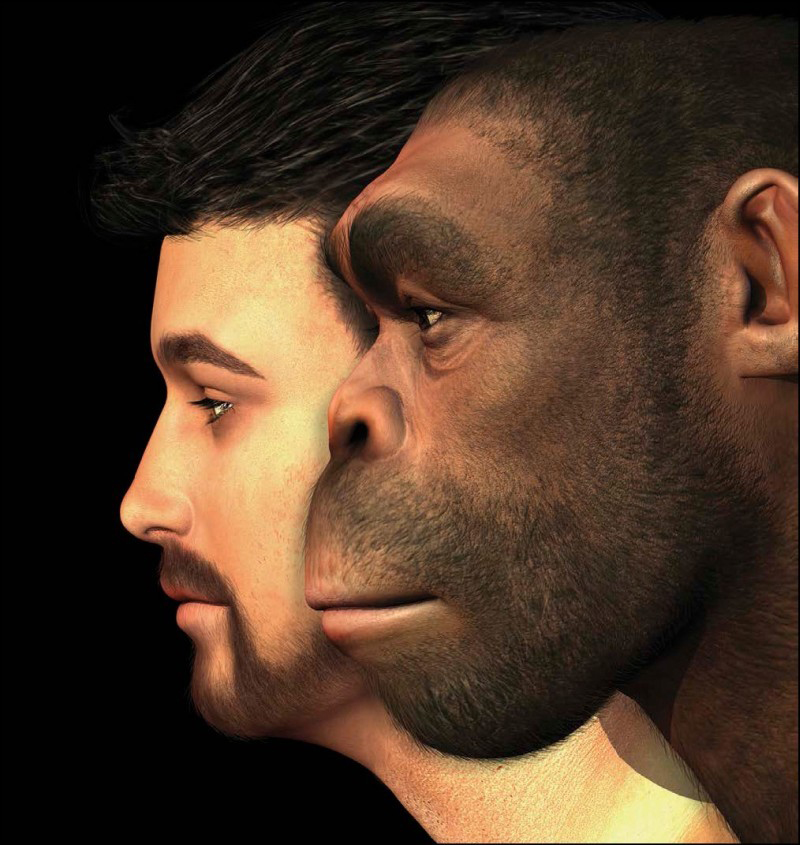
Human evolution likely began in Africa about six million years ago. Through a long series of advantageous DNA changes, humans became differentiated from our ancestors in the ape family.
DNA AND EVOLUTION
Understanding DNA has helped scientists decipher evolution. In recent years, the genomes of almost all species have been mapped and digitized. By comparing these genomes, scientists can tell how species overlap genetically and where and when they differentiated. Certain proteins are needed by all living species, so there is a great deal of overlap, but species that are closely related show the most similarities. The DNA difference between human beings and our closest simian relatives, the chimps and bonobos, is about 1.2 percent. Gorillas are more distant cousins at a 1.6 percent difference. The difference between individual humans, meanwhile, is only about 0.1 percent. Its even possible now to track the history of those differences by DNA analysis, which can pinpoint an individuals ancestral roots.
. Each protein determines a different aspect of your body. For example, one gene might be responsible for making the protein that makes your eyes blue. Another might be responsible for how tall you grow. Chromosomes, and the genes and DNA theyre made up of, are hereditary. That means theyre passed down from parents to their children. Every single cell in your body has two sets of 23 chromosomes, one from each parent.
Some people have genes that dont work the way theyre supposed to. Most people have genes that tell their blood how to clot and close a wound when theyre cut. However, some peoples genes dont carry the correct instructions, so when theyre cut, they just keep bleeding. This is called hemophilia, and its an example of whats called a genetic disorder, or genetic disease.
DNA was first discovered by a Swiss scientist named Frederich Miescher in 1869. While trying to identify the proteins that made up white blood cells, he came across a previously unknown substance.
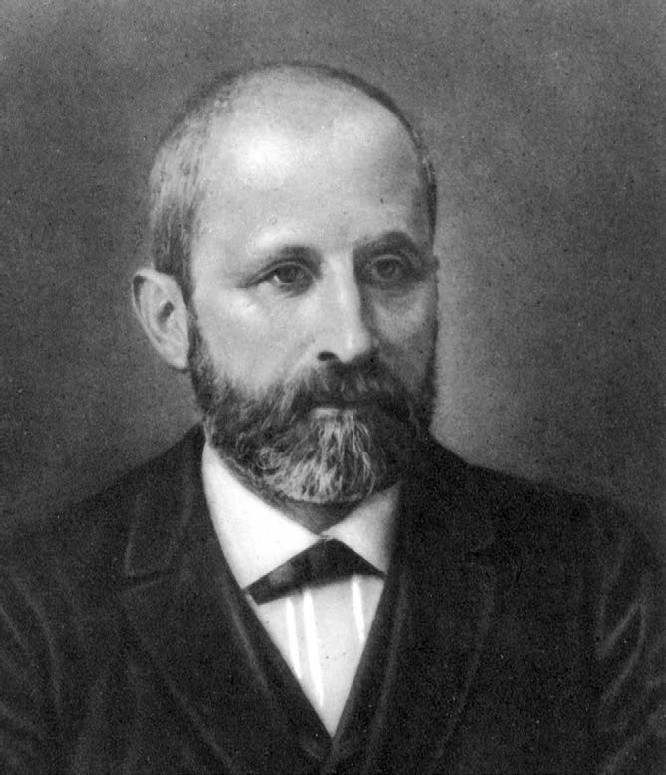
Frederich Miescher (18441895), who discovered DNA, came from a family of doctors and scientists.

Many scientists were trying, but James Watson (left) and Francis Crick (19162004) were the first to decipher the double helix of DNA.
Miescher called this substance nuclein, which would later be changed to nucleic acid, and then to deoxyribonucleic acid, which was shortened to DNA.
Researchers continued to investigate DNA throughout the first half of the 20th century. By the 1950s, it had been suggested that DNA was responsible for heredity, which is the passage of traits from parents to children. Scientists were hard at work to discover the exact structure of DNA so they could better understand how it worked. The mystery was solved by two American scientists named Francis Crick and James Watson in 1953. They figured out that DNA was a double helix, a kind of spiral made up of two chains of DNA winding around each other. Their findings would not have been possible without research done by Rosalind Franklin. Franklin had managed to take an X-ray photograph of a crystalline form of DNA. The photograph, which showed DNA as an X, was passed on to Crick and Watson by Franklins colleague Maurice Wilkins.
This photograph led directly to their double helix theory. In 1962, Crick and Watson received the Nobel Prize for their discovery, which they shared with Wilkins. Franklin, who died in 1958, was not eligible.
As scientists began to understand exactly what DNA was and what it did, they began to look for medical uses for this knowledge. The idea of gene therapy was first proposed in 1972. It was theorized that faulty genes could be repaired or replaced by injecting cells with normal DNA that functions the way its supposed to. The first human trial took place in 1980. During a trial to treat the blood disorder thalassemia, researcher Martin Cline had permission to inject two separate genes into his patients. However, he linked the two genes with a plasmid, a kind of circular DNA molecule. This type of procedure, where two separate genes are brought together in a laboratory, creates something called recombinant DNA, or rDNA. Cline was not cleared to use rDNA in his trials, and was found to be in violation of federal regulations. He was eventually sanctioned by the US National Institutes of Health.
Gene therapy is still one of the newest branches of medicine. Today, its a mostly experimental treatment, and is usually only available in select clinical trials. Its also heavily regulated by governments, due to how risky it can be. As a result of these risks, its generally only used for diseases with no other known cure.
Next page




